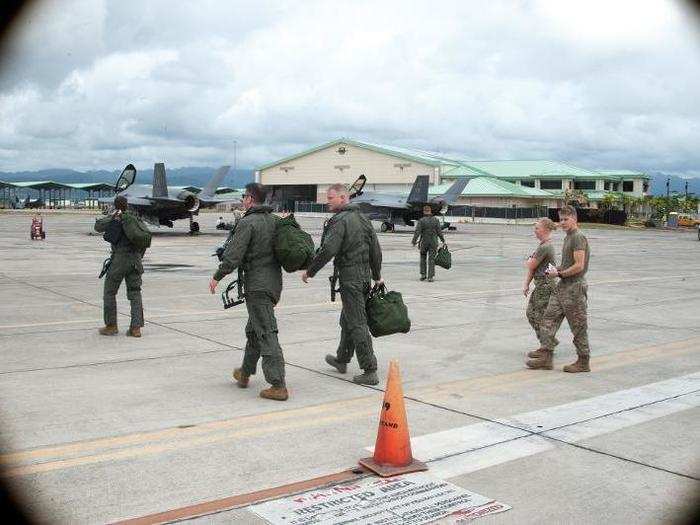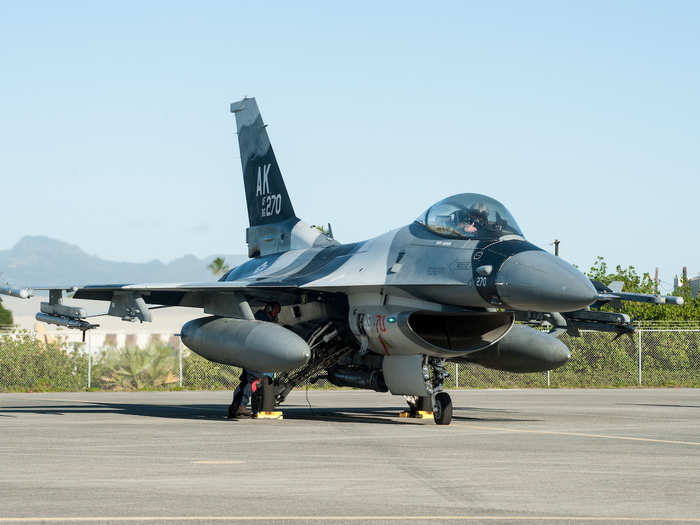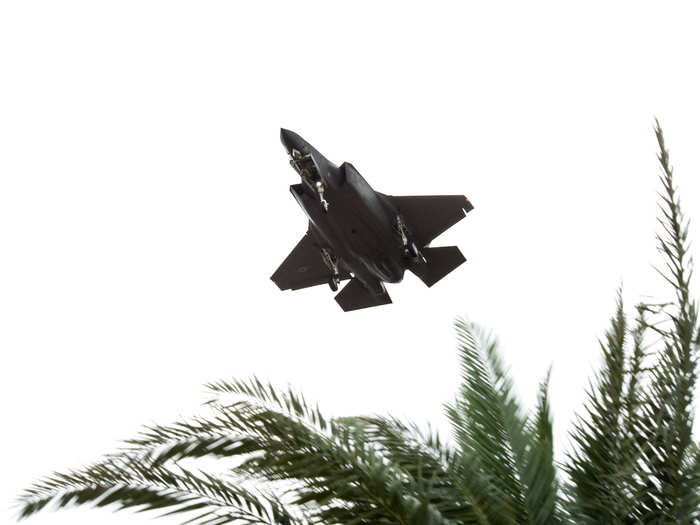The F-16 aviators, also called "Aggressors" from the 18th Aggressor Squadron, based out of Eielson Air Force Base, Alaska, prepare pilots to face a variety of new combat scenarios.
Not only do they specialize in emulating tactics which are likely to be faced in a real battle space, but their aircraft set apart by a coat of foreign-styled paint schemes.
While Hawaii-based Raptor pilots, comprised of Air National Guard and active duty Airmen from the 199th and 19th Fighter Squadrons, normally train alongside other more traditional airframes, this is the first time they combined their capabilities with other Air Force stealth fighters while on island.
"We designed the exercise so that everyone will walk away with a better understanding of the way their mission-design-series (fifth-generation aircraft) will integrate and complement the other," said Miller, "as well as a common understanding of tactics, limitations and advantages of our respective platforms."
Similar to the Hawaiian Raptors, the F-35As, assigned to Luke AFB, Ariz., are maintained and operated by total-force Airmen, to include reservists from the 944th Fighter Wing and active duty Airmen from the 56th FW.
All participating fighter airframes received in-air refueling from KC-135 Stratotankers from the 203rd Air Refueling Squadron to help pilots achieve critical training objectives.
Replenishing fuel while flying is a fundamental necessity for fighter aircraft, as it extends range and flying time indefinitely.
Throughout the training, the 169th Air Defense Squadron provided additional layers of planning, tactics and command and control. Battle managers in the ADS have a unique capability to monitor the air space around the Hawaiian islands at all times, helping to shed shed light within the designated battle space. At a moment's notice, they can relay all available information to an on-scene commander and channel orders to pilots in the air.
Pacific Raptor is designed to build off the pre-established momentum and infrastructure of a similar and long-standing exercise, Sentry Aloha, which concluded one week before Pacific Raptor began.
By scheduling Pacific Raptor directly after Sentry Aloha, mission planners reduced travel and logistics expenses while maximizing progress toward annual training requirements.
Unlike the Sentry Aloha, which has been led by the Hawaii Air National Guard's 154th Wing, Pacific Raptor is planned and carried out by representatives from each participating fighter squadron.




